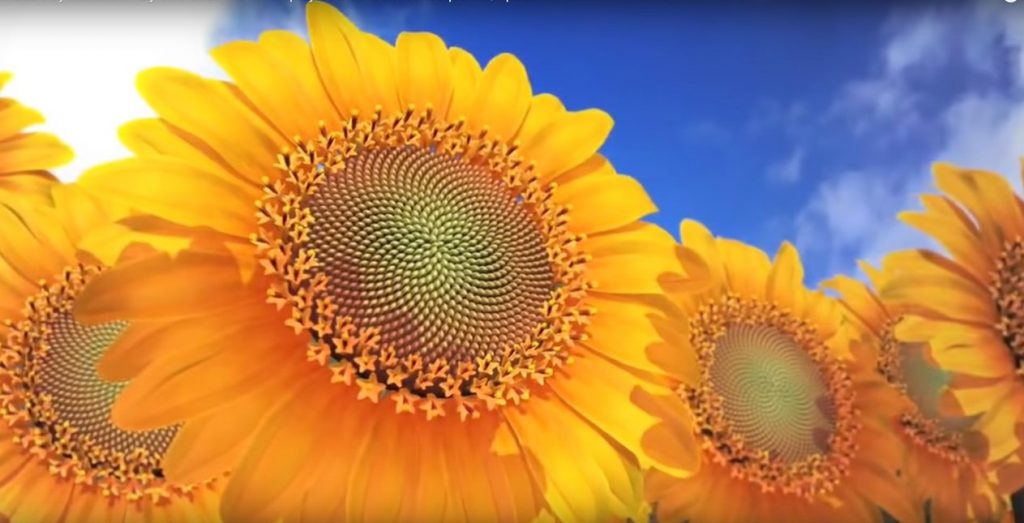
“We look at this Son and see the God who cannot be seen. We look at this Son and see God’s original purpose in everything created. For everything, absolutely everything, above and below, visible and invisible, rank after rank after rank of angels—everything got started in him and finds its purpose in him. He was there before any of it came into existence and holds it all together right up to this moment. And when it comes to the church, he organizes and holds it together, like a head does a body.” (Colossians 1:15-18, The Message)
Paul says in Colossians that in Christ all things hold together. You may find it strange that I am going to Mathematics to find one way in which this is true. Please bear with me even if you are one of the too many who, sadly, have had bruising experiences of the subject. I hope that what follows may be redemptive for you as I try to explain the truly amazing, even mind-blowing, Fibonacci Sequence and how it is to be found in the natural world.
Who was Fibonacci?
Fibonacci was an Italian mathematician who was known also as Leonardo of Pisa and who was born at about the time that Pisa’s famous tower was being constructed in the 1170s. As the son of a merchant trader, he travelled widely around the Mediterranean coast. This brought him into contact with the Hindu-Arabic system of numbering and we have him to thank that our number system is not any longer the Roman one of I, II, III, IV, V, …! (Your experience of Mathematics might have been even more bruising!)
What is the Fibonacci Sequence?
The Fibonacci Sequence is a sequence of numbers that starts with 1 and 1 and in which the next number is obtained by adding the two previous ones. 1 + 1 = 2, 1 + 2 = 3, 2 + 3 = 5, 3 + 5 = 8 so the sequence is 1, 1, 2, 3, 5, 8, 13, 21, 34, 55, 89, 144, 233, … and so on ad infinitum.
Before we go any further, I suggest that you stop reading at this point and view a very beautiful 3:43 minute video entitled ‘Nature by Numbers’ by Cristobal Vila.
I hope you enjoyed that. Now for some detail of how these numbers occur in the natural world.
Flower petals
On many flowers, the number of petals is a Fibonacci number. For example, irises and lilies usually have 3 petals, buttercups have 5, delphiniums and clematis have 8, ragwort and corn marigolds have 13, asters have 21. Daisies usually have 34, 55 or 89 petals. Sunflowers usually have 55, 89 or 144 petals.
It is important to note that there are also ‘non-Fibonacci’ flowers. However, as mathematician Ian Stewart of Warwick University puts it, “the plant kingdom seems to have an inordinate fondness for Fibonacci numbers”.[1] Where flowers have varying numbers of petals, the average number for a particular species is often a Fibonacci number.
Seed heads
Fibonacci numbers are also found in the way seeds are arranged on flower heads and florets are arranged in composite flowers (‘composite’ because what appears to be a single flower is a composite of smaller flowers). Viewed from above, the seed heads and florets seem to form spirals curving both to the left and to the right. Counting the number of spirals in both clockwise and anticlockwise directions, they are almost always neighbouring Fibonacci numbers (e.g., 13 and 21, 21 and 34). An example often found on websites discussing this is a beautiful picture of a coneflower daisy.
Neighbouring Fibonacci numbers can also be seen with pinecones (usually 8 and 13) and even with the common cauliflower (5 and 8 spirals). Pineapples have hexagonal scales which tend to exhibit three sets of spirals in consecutive Fibonacci numbers (usually 5 gradual, 13 moderate and 21 steep spirals).
The reason why this happens is that these arrangements mean that all the seeds or florets are uniformly packed in the heads or composite flowers.
Leaf arrangements
Fibonacci numbers can also be found in how the leaves of plants are often arranged around their stems. Looking down from above, the leaves are arranged so that leaves above do not hide those below. This means that each gets sunlight and catches rain.
On his very comprehensive web pages about the Fibonacci numbers, mathematician Ron Knott of the University of Surrey describes this phenomenon:
“The Fibonacci numbers occur when counting both the number of times we go around the stem, going from leaf to leaf, as well as counting the leaves we meet until we encounter a leaf directly above the starting one. If we count in the other direction, we get a different number of turns for the same number of leaves. The number of turns in each direction and the number of leaves met are three consecutive Fibonacci numbers!”
This is not easy to visualise and check. Ron Knott accompanies his explanation with some helpful pictures
Professor Knott goes on to say that has been estimated that “90 per cent of all plants exhibit this pattern of leaves involving the Fibonacci numbers”. I hope you can now see why Ian Stewart said that the plant kingdom seems to have an inordinate fondness for Fibonacci numbers.
In Part Two of this blog, we will go on to look at the Golden Ratio which underlies the Fibonacci numbers and how it is to be found in the natural world and in the arts created by human beings.
In preparation for Part Two, you may like to view a 7:31 minute TED talk entitled ‘The (ab)surd golden ratio’ by Robb Enzmann of Miami University. His aim is “to bring the fun part of math into the layperson’s life by exploring one of nature’s most fascinating numbers: The Golden Ratio”. Does he succeed? I leave that to you to judge.
Let us pray.
Lord, for those of us who believe that everything has its source in you and holds together in you, the occurrence of these numbers in nature encourages our faith in you. We thank you for the wonderful and beautiful world that you have made. Help us all to care for it. Amen.
P.S. If you would like to be notified when new blogs are posted, please EITHER (1) email me through the contact address on this website OR (2) message me if you have come here via a link posted on Facebook.
[1] Ian Stewart, ‘Nature by Numbers’, The Times, 5 May 2011.
